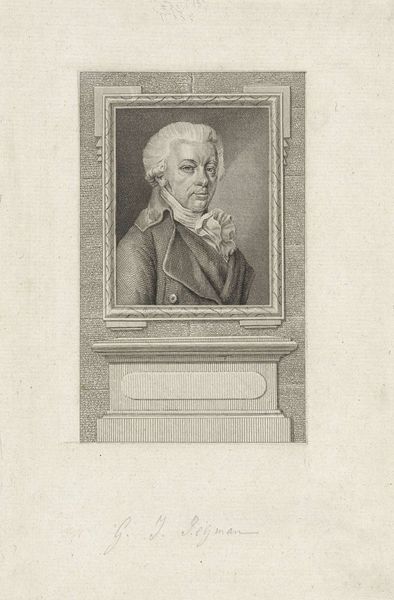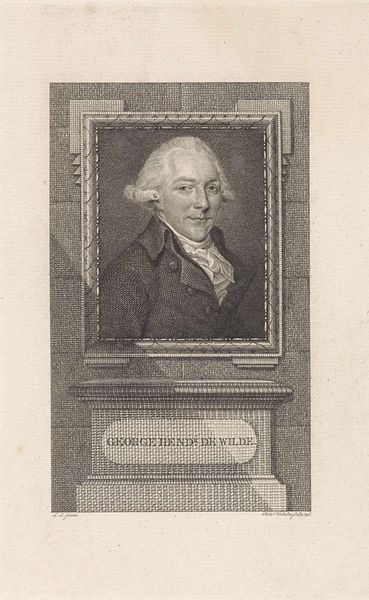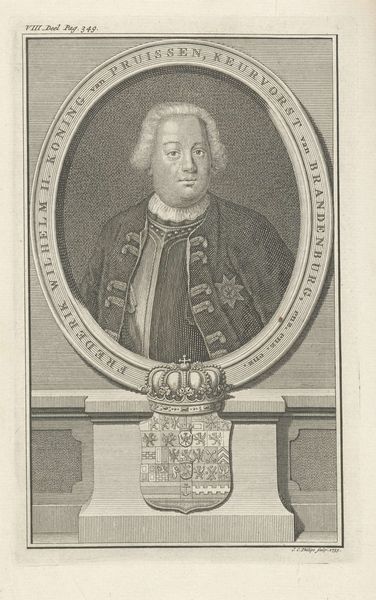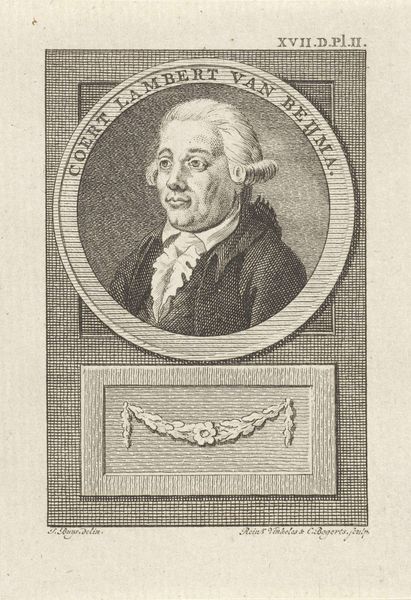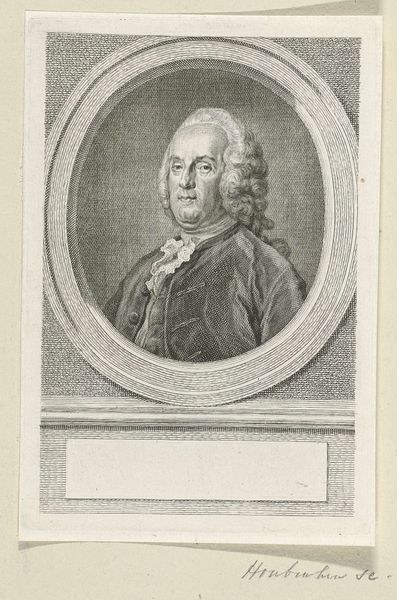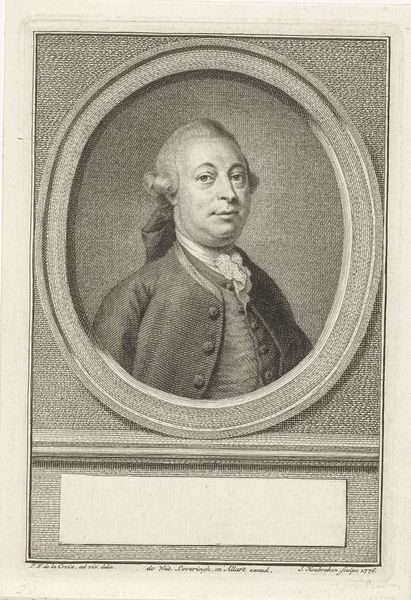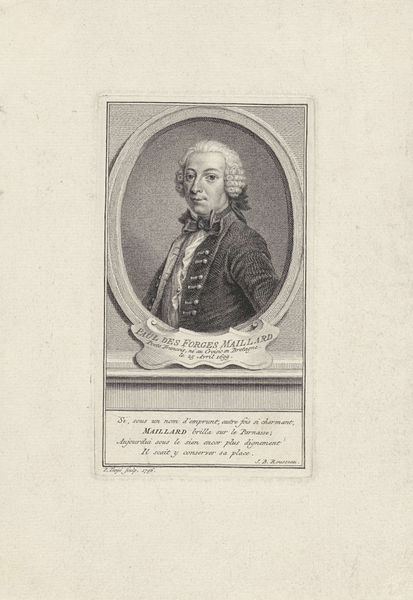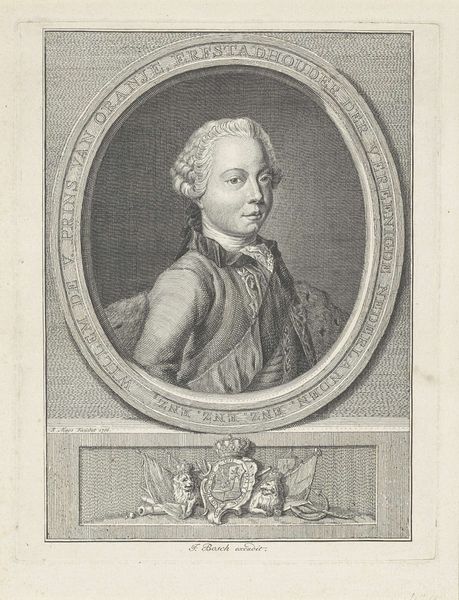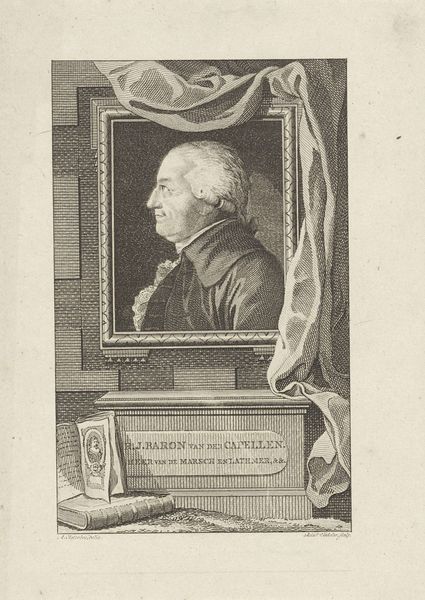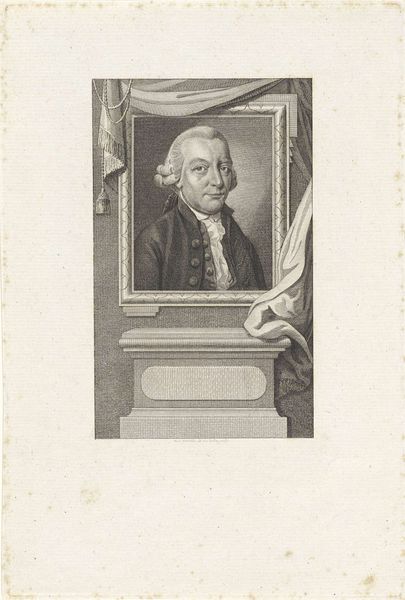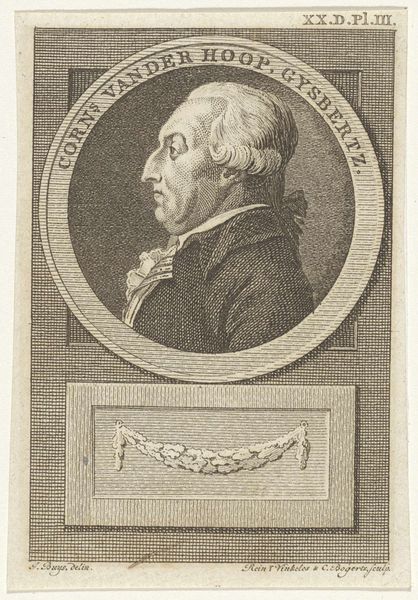
print, engraving
#
neoclacissism
# print
#
engraving
Dimensions: height 226 mm, width 131 mm
Copyright: Rijks Museum: Open Domain
Curator: Let's turn our attention to this engraving by Reinier Vinkeles, dating roughly from 1786 to 1809. The subject is titled "Portret van Cornelis Johan de Lange van Wijngaarden". Editor: My first impression is one of restrained elegance. The tonal range is narrow, primarily a play between light and shadow to define form. And, this looks so stately with such carefully etched lines. Curator: Absolutely, and notice how this piece reflects the Neoclassical movement in its celebration of order and clarity. Here we have a depiction of a man, Mr. de Lange van Wijngaarden, within the clear confines of hierarchy and representation. It is worth thinking about what kind of politics are at play within the composition. What social power dynamics are evident simply through this representation? Editor: If we think in terms of structuralism, the frame around the portrait itself creates a distinct boundary. That frame emphasizes the visual presentation, guiding the eye and creating an environment of contemplation, almost inviting an examination of signs and what these reveal about their meanings. Curator: Consider how the visual cues of class and status are deployed. The frilled collar, the tailored coat, the powdered wig–these are not merely details but markers within a larger socio-economic language. How do such portraits contribute to legitimizing specific roles? It reinforces ideas about gender, authority, and social acceptance. Editor: And the materiality—engraving as a medium itself speaks to precision, to the almost mathematical control over line and tone. Each stroke builds the form, creating a visual order and hierarchy that subtly enhances that sense of power. Curator: Right. But let’s also remember this portrait immortalizes de Lange van Wijngaarden's role within a colonial context—as part of a wealthy elite deeply implicated in the legacies of Dutch colonialism, a painful and difficult aspect of history. We are then positioned to inquire about the ongoing consequences and disparities arising from historical wealth accumulation rooted in oppression and domination. Editor: Yes, considering both the aesthetic structure and the socio-political undertones offers a very enriching approach. Curator: A dialogue we can all benefit from engaging.
Comments
No comments
Be the first to comment and join the conversation on the ultimate creative platform.

